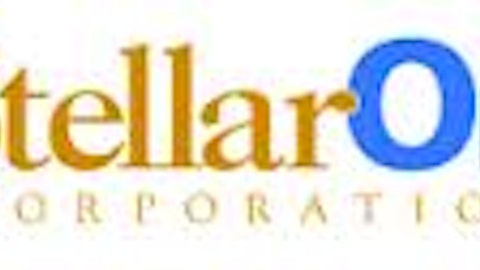Paul Egge: Yeah. Since we can’t set our watch to how we recognize gains there, we are very conservative as it relates to how we think about that source of revenue. So I would look at our non-interest expense base ex $2.4 million and think about that as our pace in 2024.
John Rodis: Okay. And then…
Paul Egge: But we are always working — we are always working on initiatives to build that. And Ray notes — Ray has — can speak to that.
John Rodis: Paul, just one other question on fee income. The card fees were down, I don’t know, about $400,000 from the third quarter. Anything going on there? How should we think about that number going forward?
Paul Egge: Interchange, fees.
Ramon Vitulli: That’s our Durbin impact. So just working hard as a team to have more penetration in our cards to try to overcome that. And we’ve seen good — really good story on our new account onboarding. And so I just hope to grow through that and overcome those — that decrease we’ve had from Durbin.
John Rodis: Okay. But the hit was started in the third quarter, so it was down and then it was down even some more in the fourth quarter. So okay.
Paul Egge: Yeah.
John Rodis: But nothing unusual or outside of Durbin in that line item?
Paul Egge: No.
John Rodis: No.
Paul Egge: So we have been — we have observed that the impact of Durbin was a little bit higher than we initially estimated.
John Rodis: Okay. And then just one other question, guys, I guess — and I know this is a little bit harder. But just on the provisioning, maybe how should we think about provision level going forward?
Robert Franklin: Well, I mean it’s formula-driven, guys. So we’re based on what happens with our loan portfolio, good or bad. And what the increases in that portfolio are will drive loan provision. It’s hard to project that almost as hard as interest rate.
John Rodis: Are…
Paul Egge: We do expect credit. We are — we have a conservative stance on credit, especially given economic unknowns. So we’re — the way we’ve planned is for a more normalized level of charge-offs in the industry in 2024, and that obviously plays into results.
John Rodis: Paul, what — when you say normal, what do you think is more normal?
Paul Egge: I would say normal to elevated. I mean for us, both legacy companies have been able to maintain, for the most part, single-digit net charge-off numbers. But when you think about industry and what’s a prudent expectation to set when there is an expectation of a credit cycle finally hitting the industry, you have to assume something in the high teens, low 20s in net charge-offs just to provide a little bit of a baseline. And we feel really good about our ability on a relative basis because of where we operate to do better than whatever the industry nationwide metrics end up being.
John Rodis: Okay. Thanks for the thoughts and Paul, just one other question. The tax rate is around 20%, still a good number?
Paul Egge: Yes.
John Rodis: Thank you, guys.
Paul Egge: Thanks, John.
Robert Franklin: Thanks, John.
Operator: Your next question comes from the line of Matthew Olney from Stephens. Please go ahead. Your line is open.
Matt Olney: Yeah, guys. Thanks for the follow-up. Just want to go back to the core margin. We saw the stabilization in the fourth quarter, I think, if you take out the accretion levels. I think a quarter ago, you were a little hesitant to call for the bottom. But assuming the Fed holds off on any moves for a few quarters, any color on kind of what’s the confidence level that the core NIM has, in fact, bottomed here in the fourth quarter?
Paul Egge: No. It’s a real uncertain backdrop. You’re going to have a hard time teasing out a bottom out of us. But we feel really good about how positioned we are to defend our margin and defend our net interest income. And we’ll let the results speak for themselves.
Matt Olney: Okay. And then on the capital front, I think, Paul, maybe it was your prepared remarks on the call. Lots of good capital build, not just in the fourth quarter but also throughout the year. Any updated thoughts around deployment this year? Could this be a year of you leaning the stock buybacks? Or do you think the environment for something more significant is something you want to focus on and maybe buybacks take a backseat this year?
Robert Franklin: Well, Matt, I think we’ve spent a lot of time making sure that we build capital levels back to where everyone feels a lot more comfortable and give us optionality on the things that we want to do. And so we want to have as many options available to us as possible, and capital provides that. It will be interesting to see how the year plays out. I know there’s a lot of expectation of rates coming down. I don’t know if that’s going to be the case or not. I think the economy still seems to be clipping along okay, although there’s a little — we’re probably going to have some slowdown at some point during the year. But — and so I think until we get a little more certainty around where interest rates are and what the economy is going to do, we’re going to continue on the same path that we’ve been on.
But all this is in — is leading into making sure that we have optionality. And if we have the opportunity, whether it’s buybacks, M&A, whatever the deployment might be of that capital dividend, we want all of those options available to us and we’ll try to choose the right one for the shareholders.




